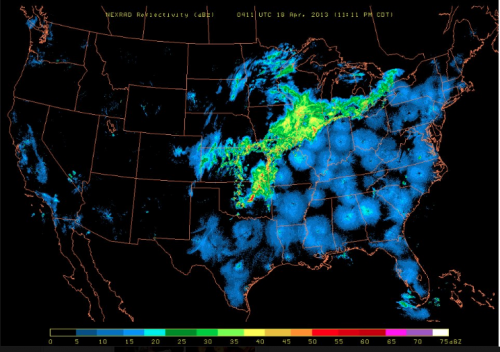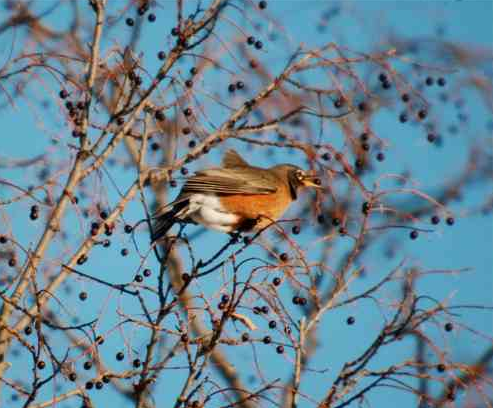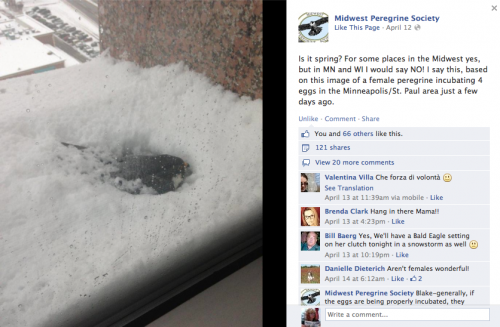 I've been posting this super cool link all over on the place on the social medias, but if you aren't in to that, I want to make sure you see it. Above is a screen grab of this video that shows birds migrating in the eastern US and getting blocked by a storm system. All those blue spheres that appear and disappear? Those are millions of migrating songbirds: warblers, orioles, hummingbirds, vireos, nighthawks, tanagers, grosbeaks, flycatchers, etc., that got up to fly north and then landed. Millions of songbirds pouring in to North American after coming up from Central and South America.
I've been posting this super cool link all over on the place on the social medias, but if you aren't in to that, I want to make sure you see it. Above is a screen grab of this video that shows birds migrating in the eastern US and getting blocked by a storm system. All those blue spheres that appear and disappear? Those are millions of migrating songbirds: warblers, orioles, hummingbirds, vireos, nighthawks, tanagers, grosbeaks, flycatchers, etc., that got up to fly north and then landed. Millions of songbirds pouring in to North American after coming up from Central and South America.
And it kind of shows what is happening with all the robins in the Twin Cities. The snow won't leave us here in Minnesota, and there's even worse weather up north. We have robins that spend the entire winter in Minnesota--they can take cold and snow and are resourceful at finding food. Then there are robins who go further south, and they are returning. Most of these birds want to go further north, but can't because the flight conditions are too dangerous. So, they are biding their time, waiting here; it's a bird traffic jam. We see bare trees, but robins will find food—berries and seeds that are not their favorite but will sustain them, like sumac and crabapple. It's like eating ramen noodles during the lean budget times (how many of us subsisted on that in college?).
People will find dead robins; migration is dangerous and birds die for all sorts of reasons—starvation can be one, but they're in far more danger of guy wires on cell towers, windows of homes, office buildings and cats.
It's not end times; this is something robins have had to deal with for centuries. The strong will survive, the weak will not. You can try putting out things like water, live mealworms, raisins, apple halves, grapes, and peanut suet doughs, but not all robins recognize bird feeders as food source the way chickadees do.
But don't worry, most of the robins will be ok. Use this as a reminder of the importance of planting native trees in your yard and consider planting crabapples, serviceberry, winterberry or cranberry. This won't happen every winter, but when it does, you'll have a valuable food source to help the birds out in your yard.
I think this photo from the Midwest Peregrine Society's Facebook page showing the female peregrine falcon at the Colonnade Building in Minneapolis incubating last week about says it all. Birds are resilient. Birds are hardy. Birds do what they have to do to survive. They are built for it, their feathers and metabolism allow them to endure this sort of hardship. Many of us watch birds flying in the wild and envy their freedom and their lifestyle of basic daily survival. We usually do this on a sunny day. Birds don't deal with taxes, boring meetings or a dunderhead of a boss. But birds do have their own challenges to endure and like the Game of Thrones saying, "You either win or you die."
That is the price they pay for their unencumbered lifestyle in the wild.
The bird abides, I take comfort in that.


